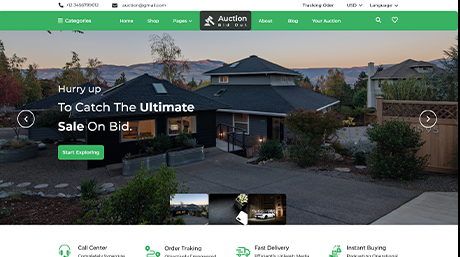Are you searching for the moderate approaches to fix WordPress 404 errors? When the post, page or custom post sort does exist? Yes, it’s truly bothersome to experience any WordPress error and feel incapable to fix it. Be that as it may, don’t stress; you are not the only one with such musings and concerns. WordPress 404 untraced errors are among the most regularly happening errors and needn’t bother with a substantial work around to fix them.
There are only a couple of steps to follow which may take you some time however will assist with disposing of those disappointing errors. Although WordPress CMS is really secure and error free in its exhibition, some of the time slight errors or changes can make your WordPress website or blog blocked off for your guests. WordPress 404 untraced errors are among such changes which need quick intercession to vanish and release your site once again into gear. Fix WordPress 404 errors.
Share:What Do You Mean By 404 Error?
It is an HTTP standard response code that indicates the requested page has not been found by the client. Consequently, it is one of the main factors that can negatively impact your site’s SEO and increase its bounce rate. The sooner you rectify such errors, the better it is for your site and its performance.
The primary cause of this issue is related to the Apache extension mod_rewrite, which is unable to rewrite your site’s URLs to use already chosen attractive permalinks. Permalinks are the permanent URLs to your site’s posts, categories, and other listings. Regarding pretty permalinks, these go beyond the default option and can include various additional choices such as the post’s publication date, post title, and more.
How to Fix 404 Errors?

Along these lines, at whatever point, the Apache expansion mod_rewrite is impaired or there are a few inconsistencies with module and layout, those connections stop working. In request to fix the issue with Apache augmentation, you have to fix your permalink settings. The main thing you can do is to simply refresh the settings without evolving anything. Head over your Admin Dashboard, Settings, Permalink and simply click on Save Changes. This stunt may manage the work in the event that you have not done custom changes to the .htaccess record previously.
If not, you’ll have to physically change to your .htaccess document and update it. For this, you have to utilize your FTP Client or cPanel to get to.htaccess record situated in the foundation of your site where envelopes like/wp-content/and/wp-incorporates/are additionally deployed. Before altering any document attempting to fix WordPress 404 error, you have to take a full reinforcement of your site with the goal that you won’t feel aches of regret later on the off chance that anything turns out badly.
In the event that you are utilizing FTP, you can alter the record straightforwardly on your worker. The most straightforward path is to change the authorizations to 666 and make the record writeable. You can utilize the code beneath and physically add it to the file.After you have finished adding the necessary code, save the file back to the server. This should effectively resolve WordPress 404 errors. If the solutions discussed above are not sufficient, the next step is to verify whether your .htaccess file permissions are properly configured.(we have to fix record authorization errors in WP with helpful data about document consents).
Utilization Of Applicable Modules To Spare Your Site’s SEO
At whatever point you put forth a valiant effort to fix WordPress 404 errors, a few pieces of your site actually stay blocked off for your crowd and disdained via web crawlers. Accordingly, it is sensible to utilize a portion of the helpful modules accessible until further notice and divert 404 pages to the landing page so that you can improve your site’s rankings. However, this supposition is inaccurate.
A 404 error doesn’t necessarily imply that something is wrong with your site at all. It simply means that the requested URL cannot be found. This could be the result of a broken link or something as simple as a typo. As such, 404s are categorized as client-side errors – indicating that the visitor has made a mistake, either directly or indirectly. Fix WP 404 errors through experts.
All things being equal, 404 errors will unavoidably consider gravely your site – particularly to guests who neglect to comprehend their motivation. They can make issues and bunches of errors will without a doubt hurt the guest experience. What’s more, if the missing page is a business page, well, that essentially annihilates any chance of scoring a change from that visitor.Hopefully, you now understand that while 404 errors may not be your fault (although some are), you should fix them. Fortunately, there’s a plugin for the job – perhaps your best solution to fix 404 errors in WordPress. It’s called Redirection and is available for free from the official repository.
Share:Three Reasons For 404 Errors
Today, we will take a gander at three regular reasons for 404 errors, and how to utilize the Redirection module to ‘fix’ them utilizing 301 sidetracks. While you can make these 301 sidetracks without utilizing a module by altering the .htaccess document physically, the Redirection module is the snappiest and most effortless answer for fixing 404 WP errors.
The three situations we will be taking a gander at are:
- Changing URLs yourself.
- Issues with inbound connections pointed at known objections.
- Issues with inbound connections pointed at obscure objections.
If you have just changed your URLs, you’re most likely encountering heaps of 404s, correct? That is awful information for everyone, so it’s the ideal opportunity for a speedy firefighting position – or a long one, contingent upon how large your site is.In this circumstance, you must make the 301 sidetracks manually.Start by making a note of all your old URLs and the relating new URLs. Presently explore to Tools/Redirection.Under the Add new redirection heading, add one of your excess URLs in the Source URL field. Despite the fact that there are various alternatives for the Match field, ‘URL just’ works best here, so leave it as is.Similarly, on the grounds that we know the objective area for our website page, we can leave the Action field set to ‘Divert to URL.’ Leave the Regular articulation field clear.
At last, input the right URL in the Target URL field. Wrap up by tapping the Add Redirection button. Now we have to test the divert. Visit the old URL and, in the event that you’ve designed the divert effectively, you’ll promptly be moved to the right URL. Your first endeavor to fix 404 errors in WordPress is a success!
Future URL Changes
In case you’re thinking about changing your URLs, help yourself out and introduce the Redirection module now. This will spare you a ton of time and disappointment down the line. This is on the grounds that Redirection will follow all progressions to existing URLs and naturally make a 301 divert when it recognizes any changes. Before you start, navigate to Tools/Redirection, at that point click on the Groups tab.
Name your gathering, set it to WordPress Posts, at that point click Add. o into a post, at that point snap to alter the URL expansion. At the point when you’ve rolled out your improvements, hit OK and afterward Update. Now, when you explore back to Tools/Redirection, you will see the module has just accomplished the difficult work. It has just made a 301 divert, pointing the old URL at the enhanced one. Fix WordPress 404 errors easily.
Buy Premium WordPress themes from our website at a very low price and get full support for a smooth experience for creating your WordPress website.
Share:












